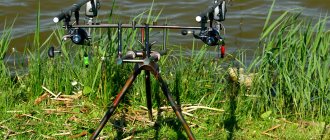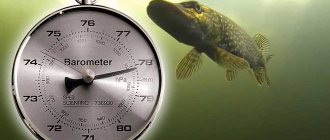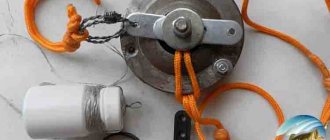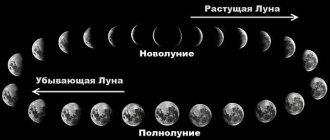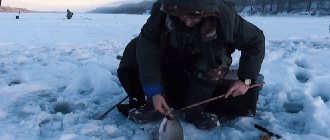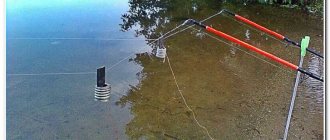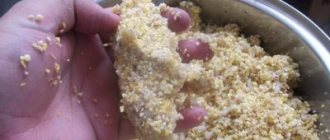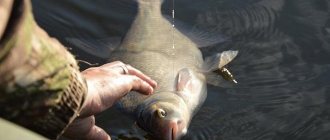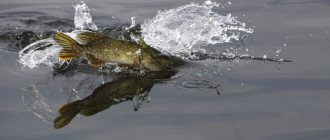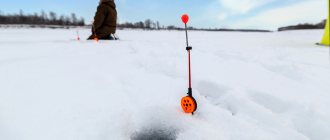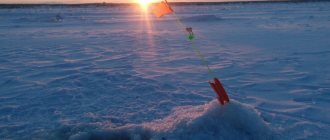The eternal question of the fisherman is: at what pressure does the fish bite better in winter? Thousands of fishermen are struggling with the decision; the fishing environment is filled with fiction and guesswork. And everyone has developed their own understanding of the influence of this factor on winter fishing. The Internet is full of articles about supposedly “better” or “bad” blood pressure. But this information, to put it mildly, is unscientific, and does not relate to the winter bite, but to the personal opinion of the authors of such publications. One thing is for sure - atmospheric pressure affects the life activity of underwater inhabitants in winter. We will discuss how exactly further in this article.
The generally accepted opinion about the effect on biting
The fishing community believes that there is normal pressure for fishing in winter and abnormal pressure. Peaceful fish are better caught at high and high pressure, and predators at low and low pressure. Long jumps discourage the bite. Anglers often put the factor of pressure on fish biting first among others. The pressure for fishing turns into a deity that you almost need to pray to so that it is “correct” when going to a winter pond. On forums there are battles and disputes about at what atmospheric pressure the fish bite better.
Factors influencing the bite
Natural factors have a particularly strong influence on the success of fishing. These include :
- Water level in a reservoir - changes in water level have a direct impact on the bite. The fish reacts weakly to a slow increase or decrease in the level, but with a sharp change in this parameter, the bite decreases.
- Water clarity - In very clear water, the fish becomes cautious, trying not to catch the eye of a predator, but at the same time, it can clearly see the bait. In very muddy water the bite is reduced or absent.
- Shaded by clouds - clouds do not directly affect the bite, but their presence determines the illumination of the reservoir by sunlight and thus the temperature. In hot summer weather, the fish goes into the depths, and in low light conditions they tend to shallow water.
- Windiness - wind affects the temperature of the water in a reservoir, and waves can form under its influence. Small ripples on the surface of the water prevent the fish from seeing what is happening on the shore, while strong winds reduce the maneuverability of the gear.
- Current speed - The current stimulates the fish to move, it begins to feed intensively, predators hunt, peaceful ones are also actively looking for food.
- The gravity of the atmosphere is one of the main factors. In order to understand at what pressure the fish bite better, you need to know how certain species behave when air pressure decreases and increases.
In addition to the factors listed, success in fishing may depend on the condition of the fishing gear, the correctly selected bait and the behavior of the fisherman himself.
Angler Misconceptions - Busting Myths and Speculations
The influence of atmospheric pressure on fish biting matters, but not nearly as much as we imagine. After studying the issue, you come to the conclusion that we, fishermen (and not ichthyologists), are mistaken when trying to determine the optimal pressure for fishing in winter. This is such a multifaceted moment of influence on the bite that it is impossible to say anything unequivocally about this.
This factor must be considered in conjunction with other phenomena, among which there are much more important ones than the barometer readings. One thing can be said for sure about how pressure affects fish - this factor does not determine the intensity of the bite, but indirectly affects it.
The developed tables of the influence of pressure on fish biting in winter do not reflect reality. Such a truly relevant table can theoretically be created - separately for each pond, lake, small section of a large reservoir, etc. Moreover, after many years of research and observation. And such a schedule will not last long - until, for example, the wind rose or the hydraulic engineering of the reservoir changes.
Do you understand the volume of such work on the scale of all water bodies? Therefore, it is impossible to create a single valid biting plan. And what is there reflects, at best, general weather trends and the personal opinion of the compiler.

Let's sum it up
What pressure is best for fishing in winter is a rather complex and controversial question. Based only on barometer indicators, it will not be possible to accurately predict when there will be a meal, and when potential trophies will refuse to take the offered bait. But there are certain rules that you should follow in order to end up with good catches more often.
- A stable good bite is observed during periods when the pressure does not change for a long time, more than several days. However, it can be high, medium or low - it’s not so important. But still, periods of stable high pressure are better than periods of low pressure.
- Periods when the barometer slowly creeps up or, conversely, falls, are also favorable for fishing.
- The worst times for going to a pond are periods with sudden pressure surges, when it rises and falls over and over again. At such times, the fish usually stops feeding or reduces its activity to a minimum.
- Before sudden drops in atmospheric pressure, fish often begin to actively feed . Feeling the approach of bad weather, she seems to be trying to eat for future use. If you correctly guess such a moment, you can get into a zhor and end up with an excellent catch.
Specific barometer values
Another myth is the claim that some specific atmospheric pressure is considered normal for fishing, while others are not. The altitude varies across regions. And it is impossible to say that the norm of 760 mm of mercury is good for fishing. In Western Siberia this will have a different meaning, and on the Eastern plateaus it will have a third meaning. This value is relative; it is impossible to use specific values to determine whether the bite will be good or not.
There is no specific value or norm of atmospheric pressure for a good fish bite. To predict fishing, you need to take into account not a specific value, but trends of change: it grows, falls, jumps or stays at the same level - this can really help the fisherman.
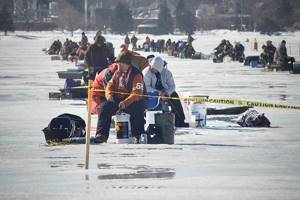
What is the essence of the question?
First, let's remember our school physics lessons. Atmospheric pressure is a value that characterizes the weight of a column of air per unit area. This value is expressed in millimeters of mercury, according to the method of the scientist Toricelli, which he proposed in 1643.
The normal atmospheric pressure of a mercury column in a glass tube at zero sea level is assumed to be 760. But since the air column decreases with increasing horizon altitude, formulas that take into account two factors are used to recalculate the normal indicator:
- relative height of the place above the sea;
- air temperature.
In the simplest calculations, the influence of air temperature is not taken into account, but the following rule is used:
Rule: When the height of the area increases by 12 meters, the value of normal atmospheric pressure decreases by 1 millimeter of mercury!
In other words, if an area with a fish pond is located at an altitude of 120 meters above sea level, a pressure of 750 millimeters of mercury will be considered normal - pH = 760-120/12 = 750.
Effect on the swim bladder and the ability of fish to control buoyancy
Often in disputes about what atmospheric pressure is best for fishing, people cite the example that pressure greatly affects the swim bladder, and this is associated with a deterioration in biting during pressure surges. The truth is that even with a change of, for example, 10 mm of mercury, the fish, in order to equalize the pressure in the bladder, needs to change the depth of immersion by only 10 centimeters. Meanwhile, underwater inhabitants constantly change their diving depth, walking many meters in the vertical plane, and do not experience any problems.
Fish swim bladders are a perfect organ for regulating buoyancy, and the influence of pressure changes on them is minimal. Therefore, the statement that pressure affects fish biting in winter due to its effect on the swim bladder is nothing more than speculation. These are attempts by fishermen to explain to themselves the influence of this factor on the bite. In fact, normal pressure for fishing in winter is almost any (except for long periods of constant sharp surges). It’s just that in winter conditions the fish behave differently, and the angler needs to choose the right fishing tactics, bait and gear.

Fishing at low and high pressure
Among all weather conditions, it is atm. pressure has the greatest influence on the favorable or negative outcome of fishing. Moreover, pike, perch, catfish, carp and roach react completely differently to lower and higher barometer values.
According to the observations of fishermen, when the pressure drops, predatory fish begin to hunt more actively and it does not matter whether there is wind or not, sunny or cloudy weather, regardless of the time of day and phase of the moon.
Especially if it has dropped, after the weather had been stable with high atmospheric pressure for several days, the predators begin to really eat.
There is a hypothesis that they are trying to get enough before the weather changes, fearing that it will become much more difficult to do so later.
Atmospheric pressure drops with the arrival of a cyclone and rises with an anticyclone. Predatory fish begin to bite poorly several hours before the arrival of the anticyclone.
At high pressure, the predatory fish becomes passive, but during this period the whitefish willingly bites. Without fear of predators, the white fish begins to look for food. White fish activity is observed from the moment the barometer needle begins to creep up and continues throughout the entire stabilization time.
Since with the arrival of the anticyclone, windy and clear days are established, therefore, it is in such weather that it is better to catch white fish. During this period, whitefish bite throughout the daylight hours.
The worst bite is observed with sharp jumps on the barometer, both down and up. At these moments, the fish seems to be in limbo, does not go to any of the baits and becomes active, or, conversely, stops eating only when stable pressure is established.
Consequently, it bites best when there are no sharp jumps that cause equally sudden changes in the weather. Remember, if the weather does not change for 3 days, favorable conditions for fishing are created. It is believed that if the temperature and pressure of the atmosphere do not change for 7 days, the fish bite will be ideal.
Optimal atmospheric pressure for fishing
To say what is the best pressure for fishing, you must first decide what you are going to fish. If the goal is to catch a predatory fish, then you need to wait until the barometer starts to fall. See the table for the best values (indicated in mm of mercury, abbreviated as Hg).
| Pike | 758-764 mmHg (there should be no strong jumps) |
| Perch, Pike-perch | 758-762 mmHg (may fall, rise or remain unchanged, but the values should be within the normal range) |
| Bream, bream | 755-760 mmHg (good if the values do not change or increase slightly) |
| Carp, crucian carp, tench | 755-765 mm Hg (comfortable pressure has a wide range, which is why carp fish bite more often than other species) |
| Catfish, burbot | 750-770 mm Hg (no correlation with a suitable pressure value for a good bite) |
| Grayling, Trout | 758-762 mm Hg (pressure does not change, a slight decrease is acceptable) |
The chances of returning with a rich catch are much higher. If you want to catch whitefish, you will have to wait for the arrival of the anticyclone, and with it, sunny days. It is at this time that she takes the bait more actively.
The main factor in winter is oxygen in the water, temperature and food availability.
Pisces are cold-blooded creatures. Metabolism directly depends on temperature. The higher the temperature, the more active the cold-blooded ones are, and vice versa. These organisms live in water and extract oxygen from it with their gills. Depending on the temperature, water is saturated with oxygen to varying degrees. At low temperatures, more oxygen is “placed” into the water, and at high temperatures, less. Here we get the opposite paradox.
- The warmer the water, the less oxygen, and the higher the fish’s metabolism. But in cold weather there is more oxygen, so the fish breathes normally, even barely moving its gills. Therefore, in winter there is a danger of death - if there is a lack of oxygen, the fish cannot actively push water through the gills and receive more of it, since it itself is inhibited due to the low temperature.
- Changes in atmospheric pressure indirectly affect the oxygen content in water, and for fish in winter this is more important than in summer. Due to low activity in winter due to low temperatures, she will always look for water with a high oxygen content in order to calmly stand there and breathe without additional effort.
- As it rises, the upper layers of water are better saturated with this gas, and this forces the fish to rise upward if in their usual place near the bottom there is not enough oxygen for comfortable breathing. This factor is relevant, for the most part, only in the wilderness.
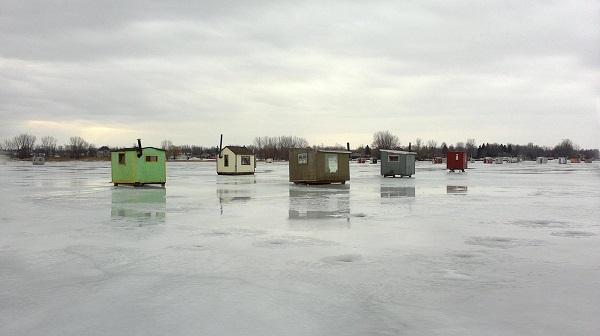
A more important factor is feed migration. It is the food that the fish follow in winter. And it rises under the ice not at all because of pressure, but following the food supply.
It is important to understand that this “influence” of pressure will rarely work in its pure form. Indeed, the oxygen content in water in winter is influenced to an even greater extent by currents, changes in bottom topography, underwater springs and the global slow transport of water masses (in large standing reservoirs). Here we come to the main idea.
In general, there is no favorable pressure for fishing. This factor can only be taken into account when applicable to specific fishing conditions and observations in a reservoir. The effect of pressure is indirect for fish; there are much more significant factors. It is not correct to ask how pressure affects fish biting in winter. The right question is where to look for fish at high or low pressure in winter, what fishing methods and bait to use.
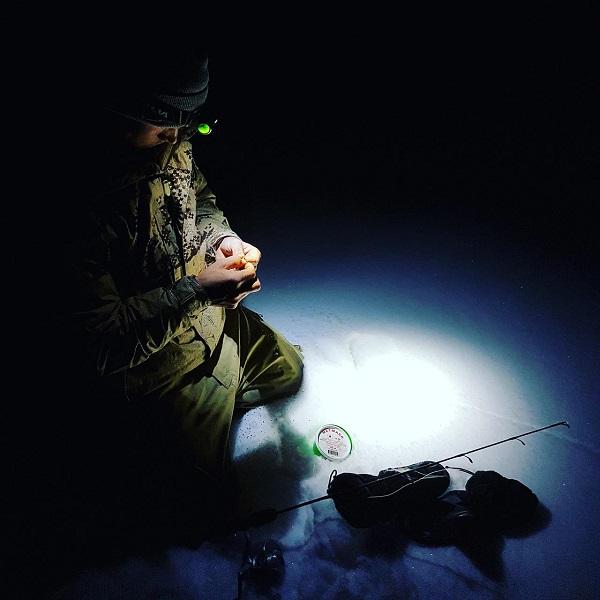
Fishing under high pressure
When the barometer is high, predators become inactive and go deeper. This is due to the fact that they do not like clear sunny weather. In such weather, peaceful individuals begin to actively search for food. These types include :
- Bream - its good bite begins in mid-summer and continues until the beginning of October, when bream gathers in groups and sinks to depth.
- Carp - loves warm weather, calm reservoirs with warm water. Carp become active in late spring and early autumn. It bites well at dawn or at sunset.
- Roach bites well all year, with the exception of the spawning period. In summer, the roach's bite is unstable, but in the spring, before spawning, when it feeds intensively, the probability of being caught increases significantly.
- Ide - its lively bite begins at the end of March and beginning of April almost as soon as the ice melts. In late spring and early summer, ide is also quite active. In summer, it bites well early in the morning, late in the evening and even at night.
As atmospheric pressure increases, weather conditions usually improve, as a result of which the upper layers of water intensively warm up. Peaceful fish under such conditions feel quite comfortable and are not afraid of predators, which concentrate in the deep layers of water, which are more saturated with oxygen in the heat.
How does atmospheric pressure actually affect the bite?
It is important to understand that fishing pressure is not an indicator of good or bad bite, but a broad condition that affects many other factors, which together determine the activity of underwater inhabitants. The barometer reveals only general trends, which lead to both an improvement in the bite and a deterioration, depending on the reservoir and many other variables. It is impossible to predict the bite from it. But assessing this value makes it possible to predict changes in the weather as a whole - wind, rain, temperature, etc.
Fishermen know that in winter fish do not like weather changes. This is true, but not always. With sudden changes from a cyclone to an anticyclone and vice versa, as well as when the border zones of atmospheric fronts are exposed, fish either are not caught or bite well, and these periods are impossible to predict. And the bite in winter is influenced not by pressure indicators, but by changes in a number of weather factors.
Atmospheric pressure is an indicator of the weather and its changes, which in itself does not affect the bite. It can be relied upon as an indirect measurement for forecasting.
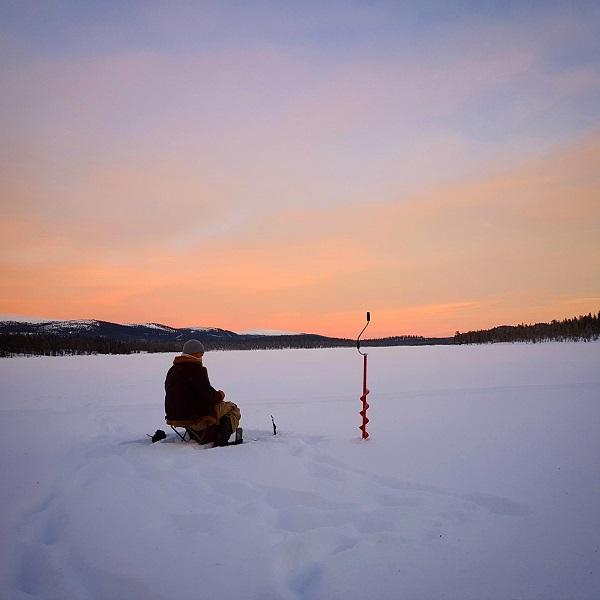
The optimal atmospheric pressure for fishing in winter is smooth, without jumps. And the fish will bite not because the pressure is exactly that, but because the weather is constant. A change in pressure is a sign of changing atmospheric fronts. And in this case, the bite in winter does not stop, but changes. The fisherman needs to re-select the keys due to changed conditions - change the depth, bait, methods of play, the fishing place itself. The barometer level itself has almost no effect on the fish bite in winter. It is an indicator of a particular state of a weather system.
Therefore, the question “at what pressure does the fish bite in winter” is not correct. You can answer it: “In any case.” It’s just that in different weather the fish will be more active or passive, feeding greedily or not. Also, depending on temperature, wind and light, it can move and stand in different horizons of the water column or change place. The fisherman needs to find out in a particular body of water under what set of conditions it begins to actively feed, and where it is at that moment.
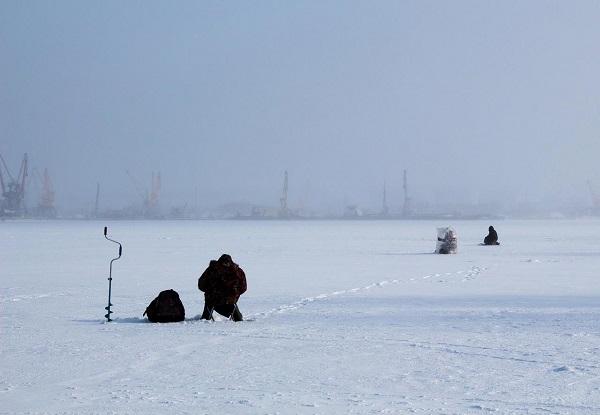
Best Weather for Fishing for Walleye | Interesting Feature
If we talk about Weather conditions, we can note that the Pike perch lies on the Bottom before the storm.
That is why, if the Forecast for the near future predicts Squally wind, Heavy rain, Hail, etc., then going Fishing makes no sense, since the probability of returning home with a catch is almost zero.
In addition, take into account this interesting feature. If the sun shines brightly for several hours, and then the weather suddenly begins to slowly deteriorate, the sky becomes cloudy, then the pike perch, as a rule, begins to become more active.
Weather Also Affects At What Distance the Fish Is from the Surface of the Water Surface:
If there is a Strong wave, then there is a high probability that the fish will try to be as Deep as possible;
If the water is Calm, the weather is Sunny, but there is no intense heat, then the pike perch may well be at a distance from the surface of the water not exceeding 1 meter.
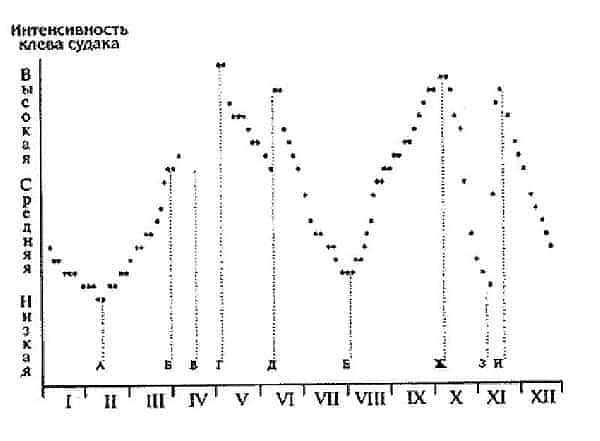
In addition, in favorable, comfortable weather, fish can also go to areas of the reservoir whose depth does not exceed 2 meters. However, there is no point in fishing if the sun shines through the pond to the bottom.
Under such weather conditions, you are unlikely to catch this predator, since it:
Firstly, it does not like clear water;
Secondly: the heat.
During the heat, the fish can find shelter in the Sandbank not far from the shore, so it makes sense to try your luck there.
If we talk about the time of day, then we can say that pike perch takes bait perfectly both at night and during the day. At dawn, small specimens are more likely to peck, while large ones go “hunting” mainly at dusk.
By the way, about Favorable Weather and Atmospheric Pressure for Pike Fishing Read here.
3 ways to improve your fish bite!
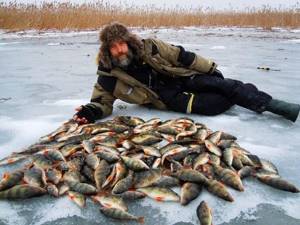
Over 15 years of active fishing, I have found many ways to improve the bite, and here are the most effective:
1. Bite activator . This pheromone additive attracts fish most strongly in cold and warm water. The Fish Hungry bite activator has proven itself to be excellent - Read more…
2. Tackle with increased sensitivity . You should first familiarize yourself with the features of using a particular type.
3. Pheromone baits . They attract the attention of fish, stimulate hunger and cause a schooling reflex, which allows you to collect a lot of fish in one place.
You can get the rest of the secrets of successful fishing for free by reading my other materials on the site.
3 ways to improve your fish bite!
Over 15 years of active fishing, I have found many ways to improve the bite, and here are the most effective:
1. Bite activator . This pheromone additive attracts fish most strongly in cold and warm water. The Fish Hungry bite activator has proven itself to be excellent - Read more…
2. Tackle with increased sensitivity . You should first familiarize yourself with the features of using a particular type.
3. Pheromone baits . They attract the attention of fish, stimulate hunger and cause a schooling reflex, which allows you to collect a lot of fish in one place.
You can get the rest of the secrets of successful fishing for free by reading my other materials on the site.
Pike perch on the Reservoir. Super Fishing in Bad Weather | Video
Other factors
The ideal pressure for fishing is a myth. Experienced fishermen know that they need to consider weather conditions for winter fishing in general:
- Temperature dynamics;
- Direction of the wind;
- Wind speed;
- Illumination;
- Dynamics of pressure changes.
There is simply no best pressure for biting fish. It must be taken into account only in conjunction with other factors - temperature, wind, cloudiness. Clear frosty weather is usually characterized by high pressure. The appearance of wind and a decrease in barometer readings indicate that clouds are likely to appear. Minor fluctuations can be ignored. But a long-term constant decrease indicates that the anticyclone will soon be replaced by a cyclone, and vice versa.
The best weather for winter fishing is constant. This is clear frosty weather (high pressure), or cloudy, cloudy, warm with low pressure. In one case, the fish will actively move, in the second, it will calmly feed in place. It bites poorly with sudden changes and constant changes, and even then not always. Before the sudden change there are short bursts of strong biting. But this does not mean that there is no bite due to pressure, which is simply an indicator and meter of ongoing phenomena.

What pressure should I choose for winter fishing?
Skilled fishermen have long established that any place can bring a good catch with the appropriate pressure. It was revealed that the combination of pressure and ambient temperature indicators decisively affects the catch. It turns out that if the pressure increases by 25-30 mm Hg within 5-6 hours, and the temperature drops by 7-12 degrees, the fish will not bite. The same outcome promises for most fish with a pressure drop of 9-11 mm Hg or more, which lasts for 5-6 hours with temperature changes throughout the entire period. The fish will not bite for a long time. When the indicators normalize and become more stable, the bite will become better. When winter fishing, a combination of different pressure and temperature indicators will be very useful. It is necessary that frosty weather corresponds to high pressure, and at low pressure there is mild frost.
For example, successful pike fishing requires low pressure and mild frost. Bream or rudd also bite well under such conditions.
In severe frosts it is good to catch pike perch or pike perch. Other species of fish are difficult to catch. Southern and eastern winds and heavy snowfalls have a negative impact on fishing. The only exception is the burbot fish, which is not afraid of any snowstorms.
Thus, atmospheric pressure is an integral part of fishing, especially for winter catches when there is no stability. Very often, it is this that becomes the barrier between the fisherman and the catch. Therefore, before you go fishing, it doesn’t hurt to understand the weather indicators and identify the most suitable ones for a particular situation.
Temperature
Ambient air temperature and pressure are also related. Low is usually warmer than high. But the air temperature itself does not affect the bite - under water, and even under ice, the conditions are completely different. Frost will become a hindrance to the fisherman rather than to the bite. But if it gets warmer for a long time, the fish become more active and bite better. In the warm water near the hydroelectric power station it bites almost all winter.

Ambient temperature
Factors such as ambient temperature and its fluctuations have a significant impact on the activity of fish, since the water temperature depends on it. It should be noted that the influence of this factor on winter fishing is much less compared to summer fishing. Winter thaws, after long frosty days, have a particularly beneficial effect on fishing.
The only fish that is not happy with warm days is burbot, which prefers frosty winter weather. Some anglers note that at a frost of 30 degrees, bream begins to show particular activity, although these are not entirely comfortable conditions for fishing and not every angler will want to be in such frost all day.
High
Where are fish located when pressure is high in winter? Such barometer readings indicate that the weather is now dominated by an anticyclone. There are usually no clouds, the wind is either absent or uniform, without gusts. In winter it is often clear, frosty weather. This weather is favorable for catching peaceful fish. The predator can also be caught. There is a myth that a predator does not bite when the barometer is high. But that's not true. At such times, he simply has no hunger; the peaceful fish is very active and difficult to catch. Therefore, the predator stands in its place and is content with falling over.
How do fish behave under high pressure in winter? In the wilderness, you need to look for them in permanent parking areas. At the beginning of winter and at the end, in such conditions it is warm, and the fish actively walks around the habitat, throughout its feeding area. The correct methods would be active search and fishing with a jig or a reelless bait. Fishing for predators can also be successful if you accurately determine the parking areas and fish there.
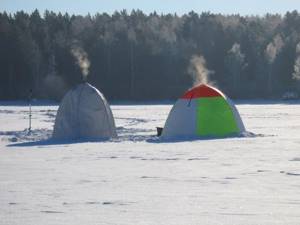
Does atmospheric pressure affect fish activity?
Weather is of great importance for perch fishing; stable atmospheric pressure contributes to perch biting. It is best to fish near the places where it will spend the winter; pressure is of great importance for perch. In winter, you need to look for perch in the deepest places, where he spends all his time.
Perch is a fastidious fish that does not like sudden changes in weather conditions. The fisherman should know that the predator bites well at stable atmospheric pressure. The fish feed actively when the weather gets warmer. At the end of winter, the bite becomes more active if the wind blows from the west or air masses come from the south.

When pressure levels are stable, the predator is actively hunting. It chases small fish and attacks baits and lures.
Low
When pressure levels are stable, perch gather in schools. The fish senses the change in weather well; with a gradual decrease in pressure, the bite intensifies, and perch is caught well. In late autumn at this time there are clouds in the sky and it is drizzling. In winter, clouds gather. The time before snowfall can be used to catch perch.
High
Fishermen should take advantage of the opportunity to catch perch on a frosty day with high atmospheric pressure, but they should pay attention to the fact that it must be stable. At high pressure, fish rise to the upper layers of water and actively hunt under the ice.
Increased pressure forces the perch to go into shallow water; it swallows bait in a layer of water from 50 cm and below. The predator reacts to jigs and spinners. In order for fishing to be effective, you should move between holes, stepping as quietly as possible. The best way to avoid noise is to properly lay out your tackle at the hole.
There is no need to remove the sludge from the drilled hole. After forming a hole in the ice, you should wait at least 5 minutes, this is necessary for the fish to calm down. After this, you can start fishing.
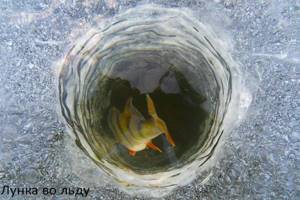
Sharp jumps
A sharp change in atmospheric pressure affects the perch bite. When the weather changes, the schools scatter and fish are difficult to catch. The biting may stop completely.
Low
The fish bite at low pressure is often sluggish, but this does not mean that it does not exist. The fish are just less active. It moves less around the pond. In such conditions, it is better to sit on bait in places of permanent deployment. A cyclone dominates the atmosphere, the sky is overcast, and it may snow. If the weather is calm, a very good bite can happen, the fish will just bite carefully and leisurely. At such times there is a feeding frenzy for the predator, which comes out of its den and hunts. This applies to pike, pike perch, and perch. Most likely, they will not stand, but will begin to scour their usual hunting grounds in search of prey.
Optimal pressure for winter fishing
The optimal pressure lies in the reaction of the fish to its decrease or increase. Different species of fish react differently to this phenomenon.
With low pressure, only predatory fish remain active, since it is easier for such species to relieve their hunger during this period. Catfish, pike perch, pike and perch become more active during this period. Catching these fish will be the most effective. All the rest of the fish at this moment will lie on the bottom at rest without signs of activity.
With increased pressure, the activity of predatory fish is muted, and the activity of most other fish increases. Fish, free from predators, begin to swim freely and increasingly rise to the surface to search for food. White fish are the most active. These are crucian carp, young perch, bream, roach.
This kind of activity begins with the first signs of increased pressure and continues throughout the entire time period until the pressure decreases.
It should be understood that this is not acceptable for a sharp increase or decrease in pressure, since with such an outcome any fish stops being active.
Promotion
An increase indicates the approach of an anticyclone, and a decrease indicates a cyclone. If these changes are smooth, then the fish does not react in any way, but simply gradually moves from one feeding mode to another. It has been noticed that with a sharp increase, roach is difficult to catch. When there is a sharp drop during the day, and the weather changes after a long cycle of good to bad, immediately before bad weather, for example, during the day, sometimes a strong bite is observed.
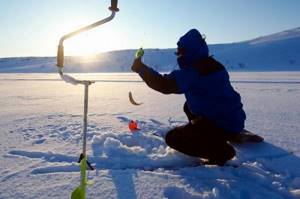
Horse racing
If the barometer constantly jumps, the weather changes and does not settle in any way, then the bite is usually bad. But this is far from the rule. With constant changes, the fish is unpredictable - now it bites, after 10 minutes it goes to God knows where. In such weather, only cold-loving burbot is good to catch.
This is far from the most important biting factor. But anglers can use it to determine weather trends, the behavior of underwater inhabitants and, as a result, the bite. On specific bodies of water, you can take notes in a notebook (if you go fishing frequently). This will allow you to capture certain weather algorithms and the impact of this change on fishing.
